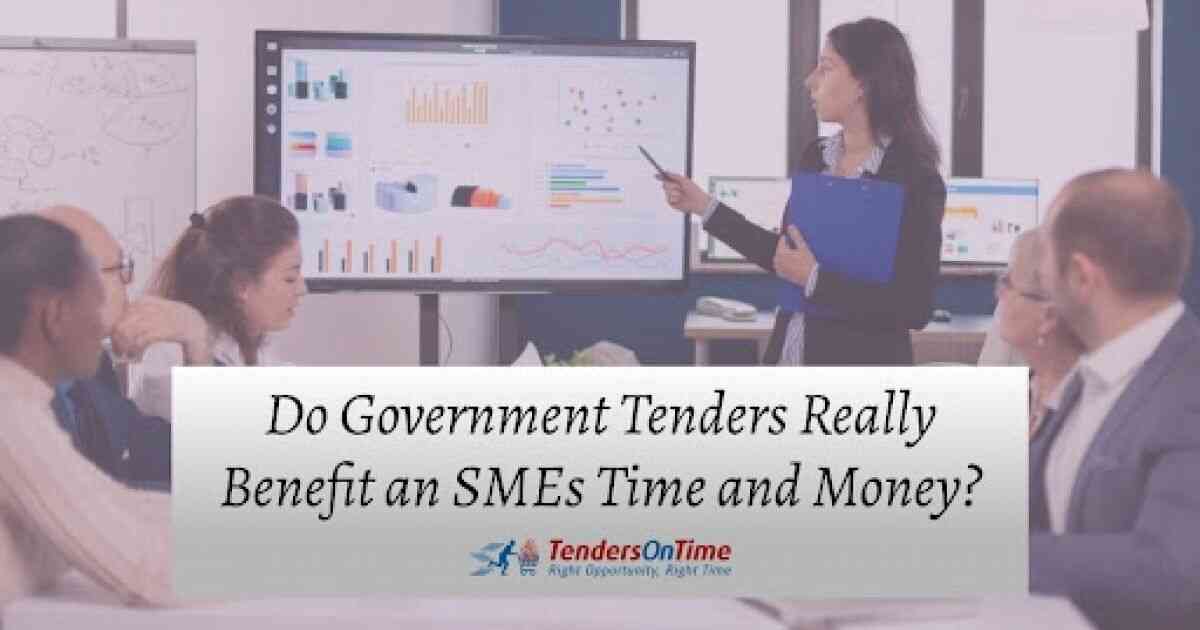Do Government Tenders Really Benefit An Smes Time And Money

government tenders are released monthly – that are a combination of central and state government tenders.
The government has initiated several policies to increase the participation of SMEs in government contracts. With a transparent procurement procedure and value for money policy, SMEs can easily tap into various opportunities from government procurement that hold a decent segment of the GDP. In India, over 75,000+ government tenders are released monthly – that are a combination of central and state government tenders. More than 7000 plus government authorities release tender notices every day which indicate the pool of opportunities available for SMEs. Government tenders form almost 10% of the country’s GDP.
Any SME or business unit from across different industries like textile, chemicals, food & beverage, packaging, garments, organic oils/spices and many more, shall always find the appropriate opportunities in government tenders that fits their bill.
So, how do we assess if the government tender is worth our SMEs time and money?
There are SMEs whose sales pipeline and revenues are driven by winning and contracting the government tenders. We will be sharing with you a checklist that may help you arrive at that decision. Before that, based on a few industry average standards, let’s see how we can come to the cost of winning and breaking even, when bidding for tenders.
Government procurement contracts are required to meet several eligibility requirements that are difficult for SMEs to fulfill. A practical approach to choose from government procurement is to first understand if the work is doable within your capacity. Keeping track of the eligibility requirements of various government tenders can help you bag a profitable government project by merging with another SME or waiting for the right one.
Hence, below simple checklist should help you get to the decision point of knowing whether government tenders are meant for your SME:
- First thing we need to keep in mind is to sort and pick the relevant tenders. Check out the number of government tender opportunities that are in your SMEs area of expertise and in the regions where you would like to do business. We would end up refining out a lot of tenders and come down to a very small number to start with
- The next thing to do is to decide the average value of the contract we want to bid for. A simple thumb rule that you may follow is that, if the tender size is 25% or more than the company’s annual turnover, then drop it. The authorities will anyway not choose us in that case, as they don’t want us to compromise on the service quality due to the size of their contract.
- Now you need to find out the cost of preparing the tender proposal. If you’re new to the government tender contracting, then the cost must be give & take > or =1% of the overall government tender value for tender values < 20Crores and 0.1 - 0.5% for other tenders. If you’re already into this, then there will be a lot of repeat stuff, and hence it will be close to 0.1 - 0.25% of the tender value.
All of the above elements in the checklist helps your SME arrive at the decision of whether to bid for government tenders or not. If you are bidding for it, it would answer the question what would be the right percentage that would be able to generate profits by bidding for the government tenders.
With various tendering opportunities being open, SMEs are bidding for tenders and winning. We at TendersOnTime would be more than happy to connect with you and help you further in this regard or help you with any other queries regarding government tenders. Subscribe to our basic or premium plan to get the latest information on online tenders, bidding and government contracts.


